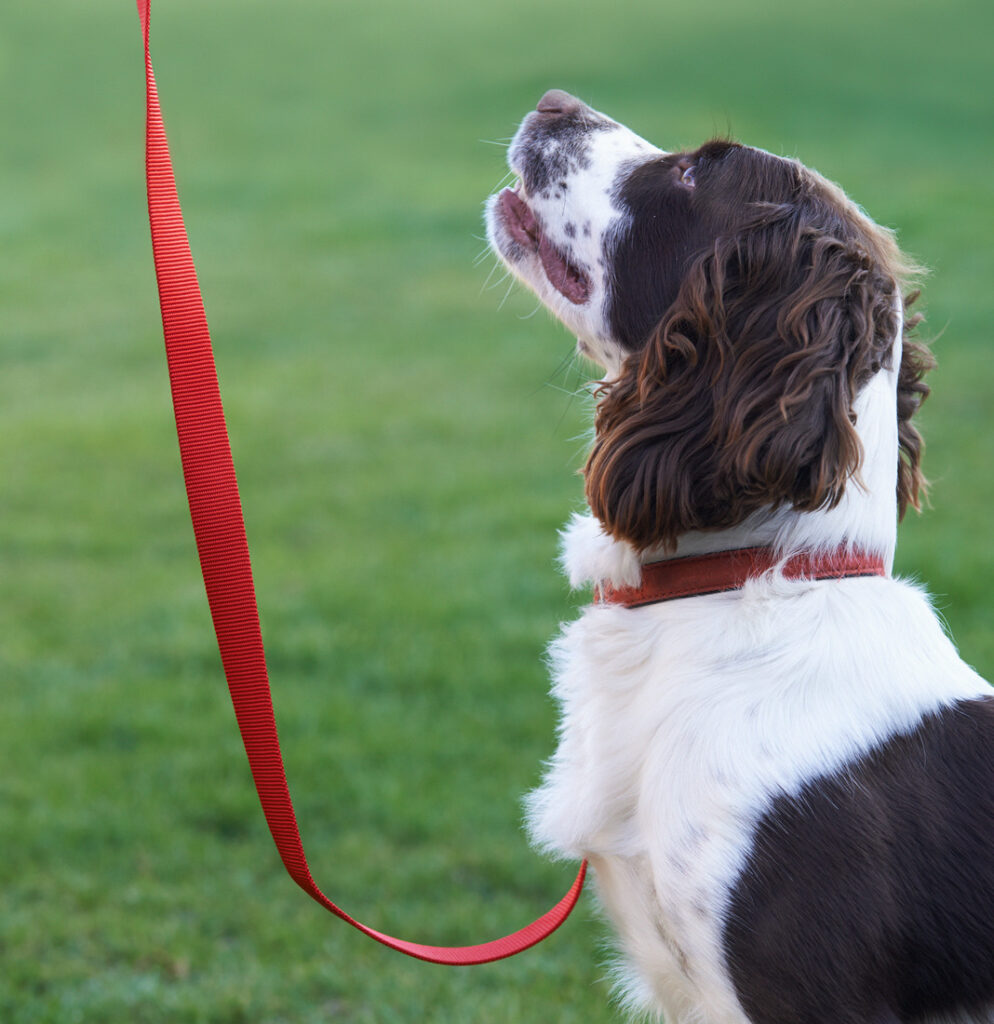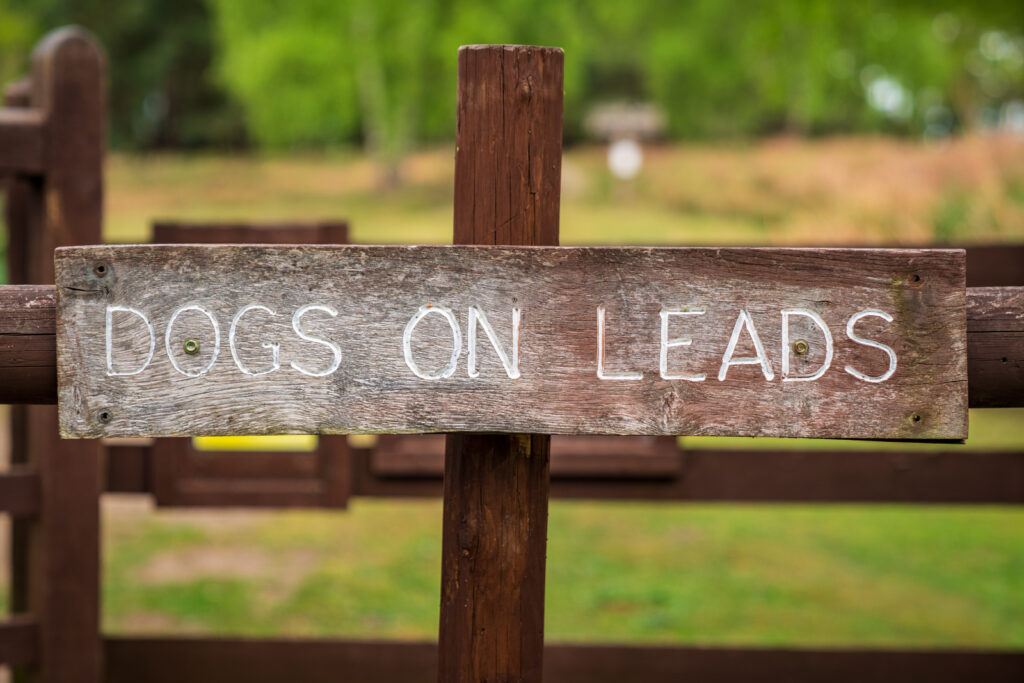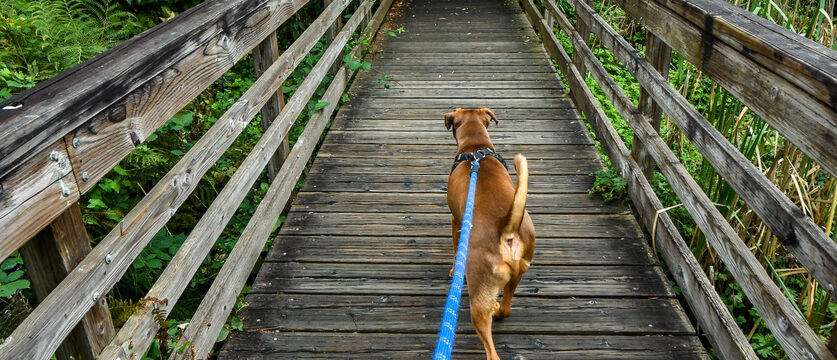Dog owners complete around 1000 miles of dog walks every year! While a proportion of these are off-lead, the chunk of time on the lead adds up too and it is important to have a great, durable lead to help keep your pet safe. Comfort is also high up on the list and we are steering clear of options that cut into our hands or put too much pressure on our pet’s necks.
Collar up!
Most standard styles of lead will need attaching to a collar. Lead and collar sets are an option, but many people mix and match depending on the best fit for their pooch. Also keep in mind that a collar is a legal requirement when your pet is in public in the UK, and should have an ID tag. For tips on choosing a collar that fits your pet, take a look at Vital Pet Club’s guide.
Dog lead size guide
The thickness of a lead will affect its strength, so a wider lead might be more durable for walking energetic dogs. Thicker leads, although heavier, tend to be comfier in the hand too. Often owners opt for a shorter lead for young dogs, and longer ones as their pet becomes more used to lead-walking. Your local pet shop specialist will be able to advise on the best size lead for your pet.
It is also worth considering material, as leads can get pretty mucky during adventurous walkies. Some will be machine-washable and others should be waterproof and easier to wipe clean.

Standard dog leads
The standard dog lead is a length of material with a handle at one end and a fastening clip at the other. These are often a flat strip of leather or nylon, but can also be a rounded rope or even a metal chain. The latter should not be confused with a choke chain, and the chain should attach onto the collar, not extending around your pet’s neck. Standard leads are generally easy to use as they are a fixed length and work well with standard collars.
Extendable dog leads
Also known as retractable leads, these give a bit more flexibility to how far away your dog can wander while staying on the lead, without leaving a long string of fabric trailing behind them! These designs will often have a thin cord that automatically rolls away into a plastic handle. As the cord is thinner, these might be less suited to large dogs that pull on the lead, and they should be checked regularly for fraying.
Slip leads
These are usually a length of rope that loops back on itself at one end to go around the dog’s neck. Traditional slip leads should generally be avoided, as they can put a lot of pressure on your pet’s neck and windpipe if they over-tighten. There are some self-limiting options that cannot tighten past a certain point. It is also worth mentioning that a standard collar and lead combo can also put pressure on your dog’s throat if they are pulling too hard. This is one of the reasons it is ideal to start lead training at an early age, and speak to a behaviourist for advice if your dog is an excessive puller!
Leads for Harnesses
Some people prefer dog harnesses to collars because any force is distributed over a larger area if they are pulling. These also avoid putting so much pressure on your pet’s neck. However, ill-fitting harnesses can cause injuries so it is really important to get your pet fitted by an expert. Depending on the style, a regular lead will often attach fine to a harness but it is best to check.
Dog lead to stop pulling
There is no substitute for effective training and the team at Vital Pet Club favours a positive reinforcement approach. This involves plenty of praise and some treats when your pet is walking well on the lead. The walk in itself also acts as a reward for your dog. If they start to pull then you should stop walking, and tempt them back to your side with a treat.
However, there are some useful training leads that can work well as an additional aid. Always ensure that these are humane, and they should not tighten around your pet’s neck. A good option is a well-fitted head collar, but these should be designed so that they do not jerk your pet’s head back or to a side, or ride up towards their eyes.
Dog lead for running
If you are planning to run with your pet, make sure you build up distance gradually. Young dogs in particular should not be over-exercised while they are still growing. It is also best not to take dogs for a run immediately after they have eaten. Specialist ‘hands-free’ leads are available that attach to a belt around the runner’s waist and can be the most comfortable option, although some owners say that a bit of training using a regular lead can work well initially. Just take care that this does not pull excessively on your arm or on your dog. Also keep in mind the strength of your pooch – you don’t want to go flying through the bushes after a rabbit!

Dog lead laws UK
In the UK, dogs do not have to be kept on the lead in public unless local authorities have introduced orders in certain local areas. This might include near roads and play parks. However, the Dangerous Dogs Act (1991) also has stipulations on not allowing your dog to be ‘dangerously out of control’. If you think your dog is unpredictable, it is best to keep them on the lead and seek behavioural advice from an expert. There are also laws in place that cover dogs causing distress to livestock, often referred to as ‘worrying’. This can include, but is not limited to, chasing, barking, and of course biting. Keep your pet on a lead in a field with livestock, even if they are usually well-behaved. The only exception to this is if you are being chased by an animal and feel threatened. In these situations, it is often advised to drop the lead so that your dog can run out of the field.
How often should you walk your dog?
Dogs need a daily walk, but many will love getting out more often than that. Walks are important for their physical fitness, but there are mental health benefits too from being stimulated by new surroundings.
Puppies should have their exercise built up gradually, once they are fully vaccinated, and the general rule of thumb is 5 minutes per month of age, twice daily. Some small breed dogs only need around half an hour of exercise a day, whereas large breeds can need over 2 hours! However, this will vary between individuals. When your pet is getting older, they might manage shorter but more frequent walks more easily. In general, it is best to stick to a similar amount of exercise each day to avoid injury and if you usually walk your pet for half an hour, a 3 hour hike might make them sore.


